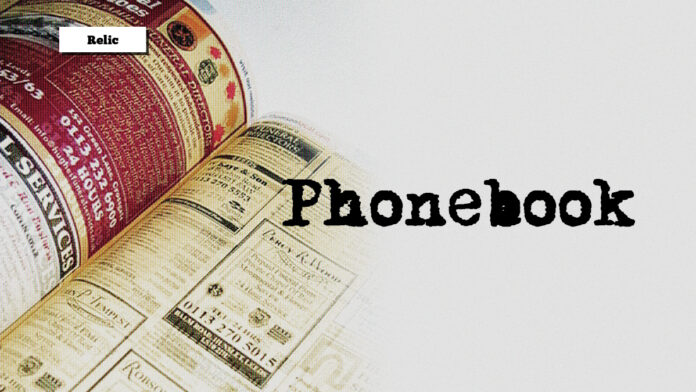Think of some of the biggest books you might have had around your house. For some, it may be school textbooks. For others, maybe the dictionary or encyclopedia. But one book ruled over all of them—the phonebook. These phonebooks were distributed at regular intervals, easily reaching hundreds of pages. if you lived in a large enough area (i.e. Metro Manila, Cebu, Davao). But a repository of information so large disappeared overnight thanks to the Internet, for better and for worse. What made the phonebook so big (literally and figuratively), and why?
The city directory actually predated the phonebook and listed residences and businesses as early as the 18th century. The phonebook itself started in 1878, a mere two years after the invention of the telephone itself. It consisted as a single piece of cardboard, listing individuals and businesses that had telephones in the city of New Haven, Connecticut. For the organized, it was not listed in alphabetical order, and had no numbers—just a list of people who had telephones.
Dr. Moses Greeley Parker suggested in 1879 that the phonebook format should be changed. Parker’s changes included listing people in alphabetical order as well as telephone numbers. Parker, who lived in Lowell, Massachusetts, suggested this because of the threat that phone operators could contract measles and be unable to connect phone subscribers to each other.
The United Kingdom made their own phonebook in 1880, listing 248 names and addresses of people and businesses living in London. It also had no telephone numbers—one had to ask for names at the exchange. One company, the Reuben H. Donnelly Company, claimed that it also published the first classified directory that would become known as the yellow pages, in Chicago, Illinois, in 1886.
Older readers may remember that phonebooks were sorted by color—yellow pages indicated business numbers, white pages indicated personal numbers, and grey pages, or the “reverse telephone directory” indicated merely phone numbers and who was associated with that number, but was only available to commercial and government agencies. However, given the ease of getting a phone number through numerous means and the ability to spoof phone numbers today, a modern-day grey pages would have been useful to notice if a number was a scammer or legitimate.
The phonebook also gave rise to a new font, Bell Gothic, in 1938. AT&T invented this font to read it at small font sizes because of the tendency of newspapers to inadvertently print small imperfections. The phonebook remained in its current form until the rise of new gadgets and technology. In 1981, France invented an electronic directory called Minitel. The directory became known as 11 after the telephone access number.
By the 1990s, new legislation governing phone books came about. The United States Supreme Court case Feist v. Rural (1991) ruled that telephone companies had no copyright on telephone listings due to copyright protecting creativity rather than compiling information. Due to the advent of digital storage, phonebooks would move to digital storage and the Internet at this time as well. Belgium launched a digital phonebook in 1995, while the United States moved both the white and yellow pages onliue in 1996 through the websites Yellowpages.com and Whitepages.com. The United Kingdom also moved their directories online in 1999.
Why were phonebooks gone for better and for worse? First off, phonebooks were a strain on the environment to the point that entire cities phased out printing the white pages entirely in the 2010s, such as New York City. It was estimated that in 2010, manufacture and distribution of phonebooks produced 1.4 million metric tons of greenhouse gases and 500,000 tons of paper annually. Why would this be a bad thing, one might ask? As previously mentioned, the ease of getting a phone number and spoofing of said phone numbers gave rise to scammers. Although many scammers would not be listed in a phonebook or directory today, websites and apps have taken their place to identify scammers and nefarious individuals and organizations looking to collect data. It could be argued that phasing out phonebooks may have actually added a layer of privacy, although people can easily be found via social media.
Phonebooks were once a great repository of information to find anyone and anything, but the Internet has largely taken its place. The biggest book in your house may be long gone, but you can now find all that data online—also for better and for worse.
Words by Jose Alvarez
Also published in GADGETS MAGAZINE Volume 25 No. 5 Issue.
